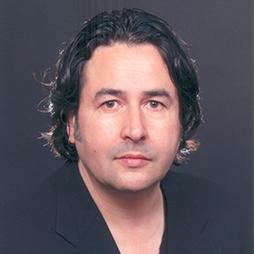Mīmēsis
for viola & electronics (virtual Nagoya harp)
Composed for Henry Justo
First performance: 14 May 2022
Performed at the ANAM Set Festival by
Henry Justo (viola)
This ANAM Set commission was generously supported by the Restart Investment to Sustain and Expand (RISE) Fund – an Australian Government initiative
Program note:
According to the Encyclopaedia Britannica, the Ancient Greek term mīmēsis, derived from mīmeisthai (μιμεῖσθαι, ‘to imitate’) is a “basic theoretical principle in the creation of art” and may be defined as “‘imitation’ (though in the sense of ‘re-presentation’ rather than of ‘copying’).” Greek philosopher and polymath Aristotle (384-322 BCE) regarded mīmēsis as the imitation of nature, with its enactment of perfection achieved via a consideration of the four causes in nature (material, formal, efficient or agent, and final or purpose) in tandem with the aesthetic quality of beauty, framed by the mathematical sciences around “order and symmetry and definiteness.” The work adopts a unique interpretation of the concept of mimesis via the juxtaposition of ‘organic,’ or intuitively-driven invention with algorithmic composition based on ‘probabilistic automata’. The melodic elements of the viola part exclusive to the former, while the materials for the secondary tape element – represented by the Virtual Nagoya Harp, or Taishãgoto (a rectangular-shaped wooden zither invented in 1912 in Nagoya, Japan by Nisaburo Kawaguchi ‘Gorã Morita’ featuring the mechanics of a typewriter with a traditional koto or autoharp) – entirely generated by a set of algorithms that ‘imitate’ the primary source via Markov-chain-derived modelling, or algorithmic mapping of the melody that take into account every set of transitions between the states. The rhythm adopts the combinatorial strategy of ‘Single-State Probabilistic Automatons,’ or “unrestricted compositions of the integer n into m parts.” The viola on the other hand incorporates a rhythmic structure based on the exploration of the mathematical concept of ‘partitions’ or ‘all partitions of n with m parts in the set’, subdividing all 20-second intervals of the work into a varied number of parts and sizes that symmetrically expand and contract in rhythmic density (essentially metric modulations with the ratios 1:1, 3:2, 2:1, 3:1, 2:1 and 3:2) over an arch-form structure.
About the composer:
In 2007, Andrián Pertout completed a Doctor of Philosophy (PhD) degree at the University of Melbourne on Tweddle Trust, Australian Postgraduate and Melbourne Research scholarships, studying composition under the guidance of Brenton Broadstock. Composition awards include the Jean Bogan Prize, ‘John Cage Centennial’ Wolf Museum of Music and Art Composition Prize (USA), Friends and Enemies of New Music Composition Prize (USA), Betty Amsden Award, Louisville Orchestra Prize (USA) and APRA Award for Orchestral Composition. He is currently the Vice-President of the Melbourne Composers’ League, Australian Delegate of the Asian Composers’ League, and International Coordinator of the PUENTE Festival Interoceánico (Valparaíso, Chile). In 2019, he was Visiting Professor at Aichi Prefectural University of the Arts (Nagakute, Japan). His music has been performed in more than fifty countries by orchestras that include the Melbourne and Tasmanian Symphony Orchestras, The Louisville Orchestra (USA), Jerusalem Symphony Orchestra (Israel), Orquestra Petrobrás Sinfônica (Brazil), Auckland Chamber Orchestra (New Zealand), Tatarstan National Symphony Orchestra (Russia), Uzbekistan National Symphony Orchestra (Uzbekistan), Orquesta Sinfónica Nacional de México (Mexico), Vietnam National Opera and Theatre Choir and National Symphony Orchestra (Vietnam), Orquesta Sinfónica de Puerto Rico (Puerto Rico), Orquesta Sinfónica Nacional de Chile (Chile), Logos Foundation Robot Orchestra (Belgium), University of Hong Kong Gamelan Orchestra (China), La Chapelle Musicale de Tournai (Belgium), and Oare String Orchestra (UK). He has received numerous commissions, including orchestral works commissioned by the Orquesta Sinfónica Simón Bolívar (Venezuela), Orquesta Sinfónica Nacional de Chile (Chile) Tatarstan National Symphony Orchestra (Russia), and Julian Burnside AO QC.
More info: https://pertout.com/
